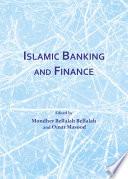
Corpus Juris of Islamic International Criminal Justice
This pioneering scholarly oeuvre evaluates the major comparative philosophy of Islamic international criminal justice. It represents an in-depth analysis of the necessities of creating an Islamic international criminal court, its possible jurisdiction, proceedings, judgments, and sanctions. It implies a court functioning under the legal personality of the International Criminal Court, with comparative international criminal lawyers with basic knowledge of Shariah contributing to the prevention of crimes and impunity at an international level. The morality and philosophy of Islamic justice are highly relevant with reference to the atrocities committed explicitly or implicitly under the pretext of Islamic rules by superiors, groups and governments. The volume focuses on substantive criminal law and three methods of the criminal procedure, namely the inquisitorial, adversarial, and adquisitorial. The first two constitute the corpus juris of civil and common law systems. The third term presents a hybrid of the first two methods. The intention is to enhance the scope of each method of the criminal procedure comprehensively. The volume examines their variations and effects on a shared system of international criminal justice. The inherence of comparable norms in the foundation of Islamic and international criminal law affirms their efficiency in the implementation of the essence of the complementarity principle. This book will appeal to readers who are interested in comparative criminal law, international criminal justice, and Shariah criminal law. It is recommended for course literature.
- ISBN 13 : 1527516938
- ISBN 10 : 9781527516939
- Judul : Corpus Juris of Islamic International Criminal Justice
- Pengarang : Farhad Malekian,
- Kategori : Law
- Penerbit : Cambridge Scholars Publishing
- Bahasa : en
- Tahun : 2018
- Halaman : 769
- Google Book : https://play.google.com/store/books/details?id=b-pwDwAAQBAJ&source=gbs_api
-
Ketersediaan :
This book will appeal to readers who are interested in comparative criminal law, international criminal justice, and Shariah criminal law. It is recommended for course literature.









